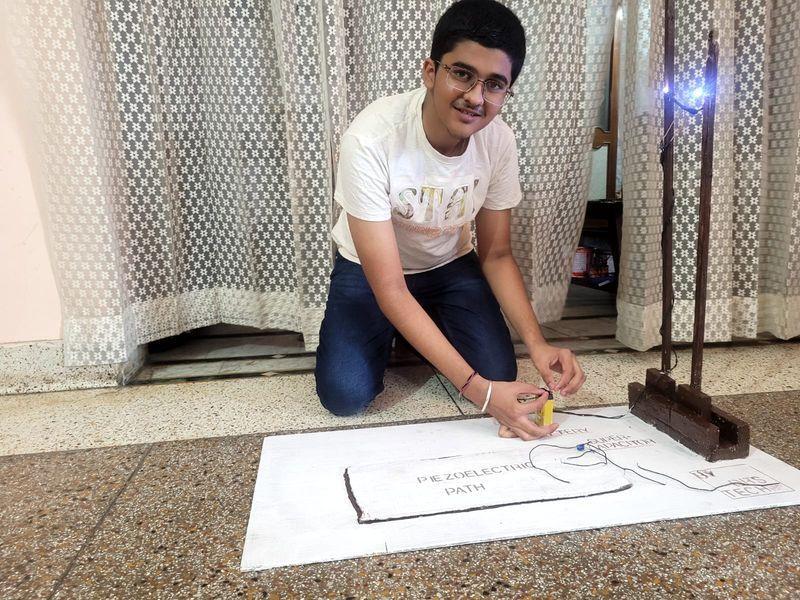
Hoshiarpur Student Builds Device to Generate Power from Footsteps
In a remarkable display of innovation and creativity, a Class 8 student from Hoshiarpur, Punjab, has developed a project that could revolutionize the way we think about power generation. Sanchit, a bright and ambitious young student, has designed a device that harnesses energy from a simple act – walking. His project, titled “Power beneath our feet,” uses piezoelectric technology to convert footsteps into electricity, making it a potential game-changer in the field of renewable energy.
The device, which Sanchit has built using a piezoelectric material, is designed to be worn on the feet like a shoe. As the wearer walks, the device generates electricity, which can then be used to power small appliances or charge devices. The potential applications of this technology are vast, and it’s no wonder that Sanchit’s project has caught the attention of local officials, scientists, and enthusiasts alike.
Sanchit’s interest in science and technology began at a young age. He has always been fascinated by the way things work, and he spent countless hours reading and experimenting with various projects. His passion for science led him to participate in several science fairs and competitions, where he earned recognition for his innovative ideas.
The idea for “Power beneath our feet” came to Sanchit while he was researching ways to generate electricity. He was inspired by the concept of piezoelectricity, which is the ability of certain materials to generate an electric charge when subjected to mechanical stress, such as pressure or vibrations. Sanchit realized that this technology could be used to harness energy from human movement, such as walking.
With the help of his teacher and mentor, Sanchit designed and built the device. He used a piezoelectric material, which is a type of ceramic or polymer that generates an electric charge when pressure is applied to it. The material was attached to a shoe sole, and as the wearer walked, the pressure applied to the material generated an electric charge.
The device is capable of generating a significant amount of electricity, even from a small amount of movement. According to Sanchit, the device can generate up to 1 watt of electricity, which is enough to power a small LED light or charge a mobile phone.
Sanchit’s project has not only impressed his teachers and peers but also caught the attention of local officials and scientists. The project has been recognized by the district administration, and Sanchit has been awarded a cash prize for his innovative idea.
The potential applications of “Power beneath our feet” are vast. The device could be used to power small appliances and devices, such as LED lights, radios, and mobile phones. It could also be used to charge devices, such as laptops and tablets, on the go. Additionally, the technology could be used to power devices in remote areas where access to electricity is limited.
Sanchit’s project is not only an innovative solution to the problem of power generation but also an inspiration to young students to pursue their interests in science and technology. His project shows that even young students can make a significant impact in the field of science and technology, and it’s a testament to the power of innovation and creativity.
In conclusion, Sanchit’s project “Power beneath our feet” is a remarkable display of innovation and creativity. The device has the potential to revolutionize the way we think about power generation and could have significant implications for the field of renewable energy. It’s a testament to the power of innovation and creativity, and it’s an inspiration to young students to pursue their interests in science and technology.






